 |
|
|
|
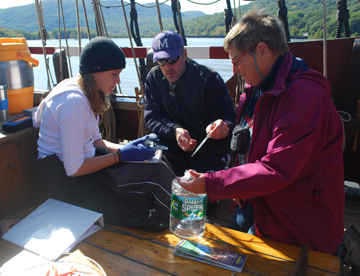
In the orientation phase, students select a topic of study that interests them and familiarize themselves with the instruments they'll need to collect data.
On this Voyage of Discovery, the students organized into six teams of two students each, each focusing on a specific field of study. In turn, each research team would work closely with an individual senior crew advisor.
|
Presentation Project Topics |
|
|
|
|
|
|
Starting on Day Two and working into Day Three, the students began their voyage by learning about each possible topic and using all of our intruments. They also used this time to devise a hypothesis or guided question that they would then test for their presentation projects. Although the research teams' individual projects would be tightly focused, each student would also learn how to perform every experiment, including several which are not currently part of anyone's research projects.
Since learning to use our scientific gear is a central part of the orientation phase, the photos below may illustrate our student crew members taking readings for the Deck Log rather than focusing on the topics of their own projects.
You can scroll down or use the links to jump directly to a topic.
|
Research Team 1: Celestial Tracking
|
| 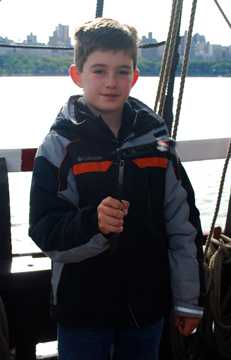 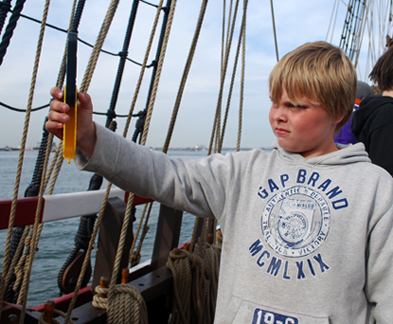
Students: Ben & Brandon
Senior Crew Advisor: Erik Berg
Hypothesis: We believe that the angle of the Sun will in the morning will mirror that in the afternoon, but the bearings will be completely opposite.
During the ship's data collection layover on the Kill Van Kull, Ben and Brandon will track the arc of the Sun to determine true noon and true south in addition to testing their hypothesis.
Back to Top
|
Research Team 2: Statistical Analysis
|
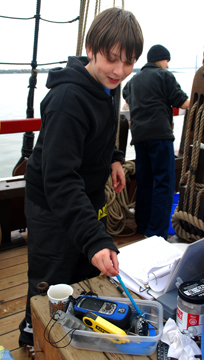 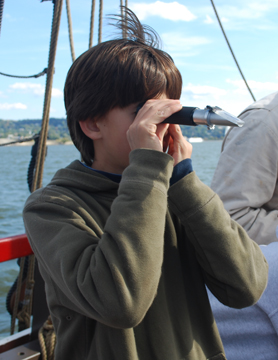
Students: Dante & Erin
Senior Crew Advisor: Kipp Van Aken
Hypothesis: We predict that the crew's readings will fall within a margin of 10 degrees.
During the Half Moon's data collection layover on the Kill Van Kull, Dante and Erin will teach the crew how to use a quadrant and directional compass to determine the altitude and bearing of a fixed point. They will then have the entire crew take readings from the same point, and will analyze the group's findings to determine the central tendencies, comparing the mean, median, and mode averages.
|
Research Team 3: Comparative Temperatures
|
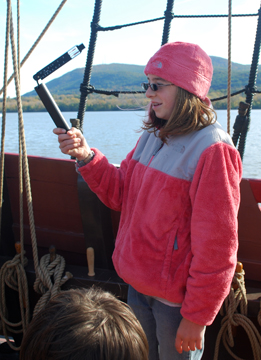 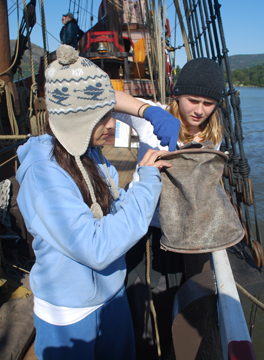
Students: Isabel & Taylor
Senior Crew Advisor: Nico Gans
Hypothesis: The water temperature will be highest in the morning and late at night. The air temperature will be highest from 1130 hours to 1530 hours.
During our data collection layover on the Kill Van Kull, Izzy and Taylor will track the air temperature and surface water temperatures, seeking to determine whether a correlation exists between them.
Back to Top
|
Research Team 4: Salinity |
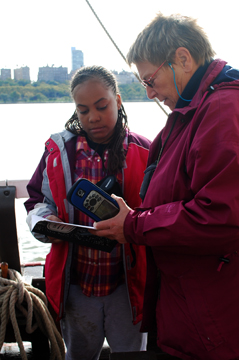 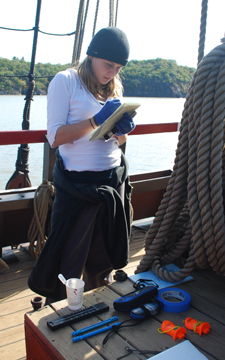
Students: Isis & Sofia
Senior Crew Advisor: Marion Bruijn
Hypothesis: We hypothesize that as we move farther south the salinity level will increase.
While the ship travels from Newburgh to Raritan Bay on Days Two and Three, Isis and Sofia will collect water samples at regular intervals, taking salinity readings as they do so. During our data layover in New York Harbor, they will analyze their readings to determine the rate at which the Hudson turns from fresh to salt water.
|
Research Team 5: Current Patterns
|
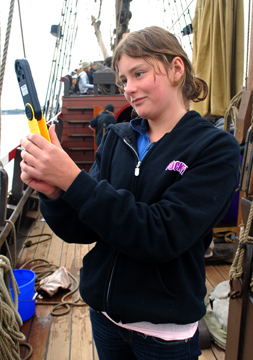 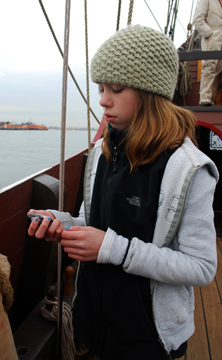
Students: Abigail & Grace
Senior Crew Advisor: Kees Collens
Hypothesis: We think that both the speed and direction of the current will change over time.
During our data collection layover on the Kill Van Kull, Abigail and Grace will track the speed and direction of the current over the course of a full tidal cycle.
|
Research Team 6: Height of Tide
|
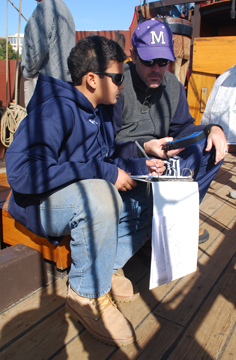 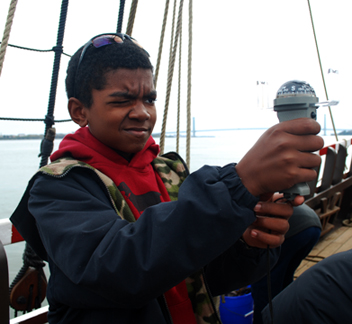
Students: Jason & Matt
Senior Crew Advisor: Rachel Laufer
Hypothesis: We hypothesize that there will be stronger currents later in the day, and that higher tides will accompany these stronger currents.
During the ship's data layover on the Kill Van Kull, Jason and Matt will use a mounted depth finder to sound the water's depth, recording the change in height of tide over the course of a full tidal cycle.
|
|
|
|

